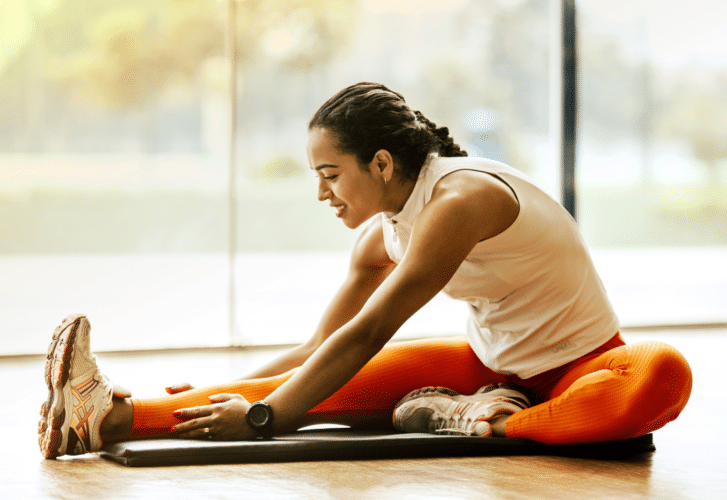
Functional fitness is more than just a buzzword; it’s a philosophy that can transform the way you approach fitness and movement. In this guide, we’ll explore the concept of functional fitness, its importance in daily life, key principles, exercises, workouts, equipment, nutrition, benefits, and how to find the right functional fitness program or trainer.
Defining Functional Fitness
Functional fitness is a training approach that focuses on improving your ability to perform efficiently and safely. Unlike traditional workouts that isolate muscle groups, functional fitness emphasizes exercises and movements that engage multiple muscle groups and mimic natural, everyday actions.
Functional fitness is all about preparing your body for the demands of daily life. Whether you’re lifting groceries, bending down to tie your shoes, or simply maintaining balance as you walk, functional fitness equips you with the strength, mobility, and coordination needed to perform these activities safely and with ease. It enhances your overall functionality, making daily tasks more manageable and enjoyable.
Why You Should Consider Functional Fitness Training
There are compelling reasons to incorporate functional fitness into your workout routine:
- Practicality: Functional fitness directly benefits your daily life, helping you move, lift, and perform tasks more effectively.
- Injury Prevention: By strengthening the muscles and joints you use most frequently, functional fitness reduces the risk of injuries during everyday activities.
- Enhanced Athletic Performance: Athletes can gain a competitive edge by improving their functional strength, agility, and coordination.
- Weight Management: Functional fitness workouts can help with weight loss and weight management by burning calories and building lean muscle.
Key Principles of Functional Fitness
Core Strength and Stability
Your core is the foundation of functional fitness. It includes the muscles of your abdomen, lower back, pelvis, and hips. A strong and stable core is essential for maintaining good posture, balance, and overall functional strength.
Mobility and Flexibility
Mobility is the ability to move your joints freely through their full range of motion. Flexibility is the lengthening of muscles and tendons to increase joint mobility. Together, mobility and flexibility ensure you can move with ease and prevent stiffness and discomfort.
Balance and Coordination
Enhancing your balance and coordination improves your ability to perform daily tasks, such as walking on uneven surfaces, climbing stairs, and even standing on one leg. This aspect of functional fitness is especially crucial as we age.
Multi-Joint Movements
Functional fitness prioritizes multi-joint movements, which involve multiple muscle groups and joints working together. These movements closely mimic real-life actions and improve overall functional strength and coordination.
Exercises for Developing Core Strength
To strengthen your core, consider incorporating exercises like planks, Russian twists, bicycle crunches, and stability ball exercises into your routine. These exercises engage the muscles of your core and help build stability.
Exercises for Mobility and Flexibility
Regular stretching and specific exercises, such as the following, can significantly improve your mobility and flexibility:
- Yoga Poses: Incorporate yoga poses like Downward-Facing Dog, Cobra, and Child’s Pose to enhance flexibility and mobility.
- Dynamic Stretching: Perform dynamic stretches such as leg swings, arm circles, and torso twists to improve joint range of motion.
- Foam Rolling: Use a foam roller to release muscle tension and improve flexibility in specific areas like the calves, hamstrings, and quadriceps.
- Resistance Band Stretches: Utilize resistance bands for assisted stretching exercises that target various muscle groups.
- Pilates Movements: Pilates exercises like the Cat-Cow stretch and the Saw can enhance spinal flexibility and mobility.
- Tai Chi Movements: Incorporate gentle Tai Chi movements to improve balance, flexibility, and overall mobility.
Exercises for Balance and Coordination
Balance-boosting exercises can help improve your balance and coordination over time. Practicing these exercises can prevent falls and injuries:
- Single-leg stands
- Heel-to-toe walking
- Stability ball exercises
- Bosu ball exercises
- Balance board workouts
- Yoga balance poses
- Single-leg deadlifts
- Ladder drills
- Box jumps
- Cone or marker drills
Multi-Joint Movements
Examples of multi-joint movements include:
- Squats: Engages the hips, knees, and ankles, promoting lower body strength and mobility.
- Deadlifts: Targets the lower back, glutes, hamstrings, and core, enhancing overall strength and stability.
- Lunges: Works the quadriceps, hamstrings, and glutes while improving balance and coordination.
- Push-Ups: Engage the chest, shoulders, triceps, and core muscles for upper body strength.
- Pull-Ups/Chin-Ups: Strengthen the back, biceps, and core, aiding in upper body stability.
- Rows: Target the upper back and biceps while supporting better posture.
Functional Fitness Workouts
Full-Body Training Routine
A well-rounded full-body functional training routine typically includes:
- Warm-up: Prepare your body for exercise with dynamic movements that increase blood flow and raise your heart rate.
- Strength Training: Incorporate multi-joint exercises like squats, lunges, and push-ups to work major muscle groups.
- Mobility and Flexibility: Perform stretching and mobility exercises to improve joint range of motion.
- Cool-down: Conclude your workout with static stretching and relaxation techniques to reduce muscle tension.
Specific Functional Workouts
- For Athletes: Athletes can benefit from sport-specific functional training to improve their performance and reduce the risk of injuries.
- For Seniors: Functional fitness is an excellent choice for seniors looking to maintain independence and stay active as they age.
- For Weight Loss: Functional fitness workouts can be adapted to promote weight loss by incorporating high-intensity intervals and cardiovascular exercises.
Functional Fitness Equipment
Functional fitness equipment is designed to support multi-joint movements and functional training exercises.
Essential Tools for Training
- Resistance Bands: These versatile bands provide resistance for a wide range of exercises, including squats, rows, and bicep curls.
- Kettlebells: Kettlebells offer an excellent way to perform dynamic, full-body exercises like swings, snatches, and Turkish get-ups.
- Medicine Balls: Medicine balls are ideal for explosive exercises like ball slams, wall throws, and Russian twists.
- Suspension Trainers: Suspension trainers, like TRX, allow for bodyweight exercises that improve strength and stability.
- Balance Boards: Balance boards enhance coordination and balance by challenging your stability.
It’s best to work with these tools under the guidance of a certified personal trainer.
The Role of Nutrition
In addition to supplying essential nutrients, nutrition is the fuel that powers your functional fitness journey. Proper hydration ensures you have the energy to tackle workouts, while a balanced intake of protein aids in muscle repair and growth. Carbohydrates provide the primary source of energy, allowing you to perform functional fitness exercises with vigor. Healthy fats, particularly omega-3 fatty acids, support joint health and overall well-being, contributing to your ability to move and function efficiently.
By nourishing your body thoughtfully, you can optimize your functional fitness progress and overall well-being.
Finding the Right Functional Fitness Trainer
When searching for the right functional fitness trainer, consider the following:
- Certifications: Ensure they hold relevant certifications in functional fitness or related fields.
- Expertise: Seek trainers with extensive knowledge of functional fitness principles and exercises.
- Personalization: Look for someone who tailors workouts to your specific needs and goals.
- Empathy: A trainer who empathizes with your challenges can provide invaluable support.
- Accountability: Look for someone who holds you accountable for your fitness goals, helping you stay on track.
- Reviews and Recommendations: Read reviews and seek recommendations from others who have worked with the trainer.
In Conclusion
Functional fitness isn’t just a workout; it’s a way of life that empowers you to move more efficiently and live with confidence. Whether you’re an athlete looking to enhance performance, a senior aiming to maintain independence, or anyone seeking a healthier, more functional life, functional fitness can be the key to achieving your goals. Remember, the journey to better functionality starts with taking action.
Enroll in a Florida Personal Trainer Certification Course with NPTI Florida
If you’re passionate about functional fitness and want to help others experience its benefits, consider enrolling in a personal trainer certification course.
NPTI Florida offers a comprehensive personal trainer certification course that covers functional fitness and more. Our accredited personal training diploma program equips you with the knowledge and practical skills needed to become a certified personal trainer.
Contact NPTI Florida to learn more about our certification course, enrollment process, and start dates. Your journey to becoming a certified personal trainer begins here.
Tags: Functional Fitness
